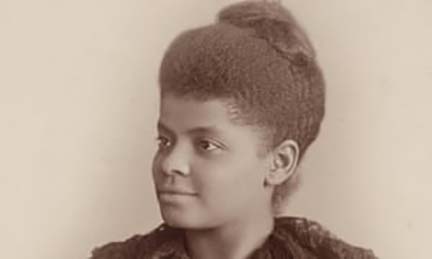By Martha S. Jones
Published in collaboration with PBS for the documentary The American Experience: The Vote which explores the arduous battle that finally led to the passage of the 19th amendment.
In late winter 1913, suffragette Alice Paul and her committee of the National American Woman Suffrage Association (NAWSA) were at work planning a women’s parade that aimed to upstage Woodrow Wilson’s inauguration with a many-thousand-strong phalanx of women protesting for the right to vote. Paul was poised to pull off an unparalleled act of political theater on the nation’s biggest stage, Washington DC’s Pennsylvania Avenue. Her vision was clouded, however, as Paul contemplated what it would mean to have Black women among the marchers.
By 1913, racism was tightly stitched into the fabric of the movement for women’s votes. As far back as the 1860s, suffrage leaders had traded in anti-Black thinking. They had even linked arms with openly racist allies who, for example, in 1867 Kansas looked to trade the defeat of Black enfranchisement for the elevation of white women to the

polls. The movement continued into the 20th century by way of a southern strategy that aimed to win support for a women’s suffrage amendment by remaining hands-off when it came to Jim Crow, assenting to the ongoing disenfranchisement of Black women in the south. Paul built her radical wing of the movement on this troubled foundation.
Initially, Paul had reached out to invite Black women in Washington, D.C. – especially the members of Howard University’s Delta Sigma Theta sorority – to take part in the parade. Facing criticism and the threat that white southern women might pull out, Paul recalculated, and drew a line: the parade was to be “a purely suffrage demonstration entirely uncomplicated by any other problems such as racial ones”. Paul imagined she knew best: “Our winning suffrage will be the thing that will most raise the state of Negro women.”
Had she asked, Black suffragists would have advised Paul that there was nowhere for her committee to hide. Racism and sexism were bound together in the fight for women’s votes. When it came to suffrage politics, there was nothing pure about them.
On the morning of 3 March 1913, Black women rose early and joined the throng that assembled for the parade. Ida B Wells, the Chicago-based anti-lynching and women’s suffrage activist, was at the center of a true dust-up when on the eve of the parade she was advised to march with other Black women rather than with her Illinois state delegation. It was a painful rebuke, but Wells refused defeat and ultimately marched with her state’s representatives, flanked by white women allied with Chicago’s Alpha Suffrage Club.
Mary Church Terrell was a former head of the National Association of Colored Women and a Washington DC powerbroker who traveled home from New York to march. Terrell had always kept one foot in suffrage association politics and knew its shortcomings well. Neither Wells nor Terrell frequented Paul’s circles but they appeared on that day to make plain that Black women would never cede the question of their voting rights to others.
Wells and Terrell were not alone. Most of the two dozen or so Black women marchers were local residents of Washington, including the sculptor May Howard Jackson; the director of the Washington Conservatory of Music, Harriet Gibbs Marshall; pharmacists and drugstore owners Dr Amanda Gray and Dr Eva Ross; and a contingent of so-called college women that included Oberlin College graduate and advocate for early childhood education Anna Evans Murray, M Street school French instructor Georgia Simpson and Smith College graduate Harriet Shadd. Howard University students joined the procession decked out in caps and gowns.
What had been Black women’s experience of the parade? Carrie Clifford, the poet and activist, boasted to readers of the NAACP’s magazine, the Crisis, that Black women should be “congratulated” for “taking part” and demonstrating the “courage of their convictions”. They had not been encouraged to participate but once there they received “courteous treatment on the part of the marshals” and “no worse treatment from bystanders than was accorded white women”.
In the same issue, editor WEB DuBois detailed the strife that had surrounded Black women’s attempts to join the parade as equals and, like Clifford, he concluded that ultimately they had marched “according to their state and occupation without let or hindrance”. Editors at the Chicago Defender were not so understanding and insisted that Paul and her committee owed Black women marchers a “public apology” for “drawing the color line”.
Perhaps the best measure of how the 1913 parade mattered was what Black women did next. In the months that followed, they did not look to collaborate with Paul’s NAWSA. Nor did they pursue their grievances. Instead, Black women returned to their ongoing work, commingling their commitment to the vote with concerns about racial justice. Carrie Clifford not only wrote for the Crisis, she raised funds to support the magazine, chairing a benefit along with suffragists Addie Hunton and Terrell. Terrell returned to the lecture circuit in Brooklyn, where she urged audiences to support anti-lynching legislation. Wells headed home to Chicago, where she continued to build the influence of the Alpha Suffrage Club.
They were busy that spring, women’s suffrage was on the agenda in Illinois’s capital. But so was a cluster of Jim Crow laws that proposed to segregate transportation, demote Black train workers, and bar interracial marriage. Whatever disappointments Black women felt after the March 1913 parade, they quickly receded. There was too much work to do.
Martha S Jones is the author of Vanguard: How Black Women Broke Barriers, Won the Vote, and Insisted on Equality for All (Basic Books)



